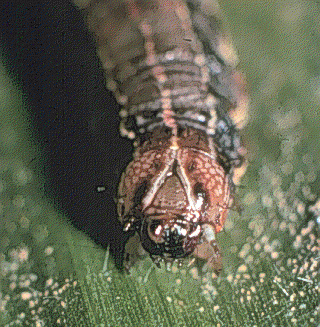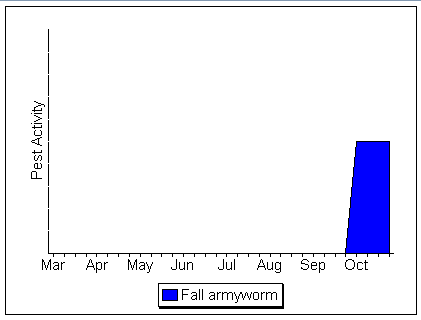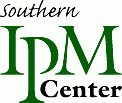Fall Armyworm in Wheat
Fall Armyworm
Description

Fall armyworm head
Larvae of fall armyworms vary from light tan to nearly black with three thin light yellow lines down the back. There is also a wider dark stripe and a wavy yellow red splotched stripe on each side. Fall armyworms resemble both armyworms and corn earworms. Fall armyworms, though, have a prominent inverted "Y" mark on the front of the head.
The fall armyworm also can be distinguished from true armyworms by the time of year they appear and their habit of remaining and feeding on the plant during the day. True armyworms are present in Kentucky from April through June whereas the fall armyworm appears from October through December, although they do not occur very often in wheat in Kentucky. Besides wheat, other plant hosts include corn, sorghum, grasses, alfalfa, beans, and other grains. Fall armyworms have from one generation a year in northern areas to 5-10 generations a year in southern Florida.
Damage
Window pane feeding may be the first signs of armyworms. As the larvae grow symptoms will include chewed leaves and entire plants may be destroyed. Damage is possible from early September until the first heavy frost.
Fall Armyworm Activity

Please note: These dates are approximations only. This calendar was constructed using data from Kentucky, USA. These dates may not apply in your area. You may wish to contact your county extension agent or agricultural consultant for information tailored to your locality.
IPM Techniques and Scouting Procedures
Scout each field at least once each week, checking five locations per 50 acres of field size.
At each location examine the plants looking for “cut off” or “grazed off” plants. This will likely appear in a “patchy” pattern. The insects do not burrow in the ground, but will hide under residue. Count the number of insects (worms) ½ - ¾” long per square foot. Average these counts for the field, or infested areas.
References and Additional Information
IPM-4 - Kentucky IPM Manual for Small Grains


